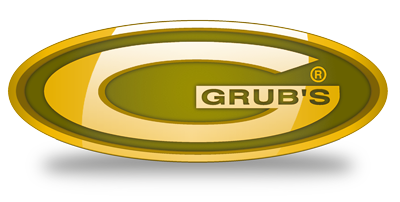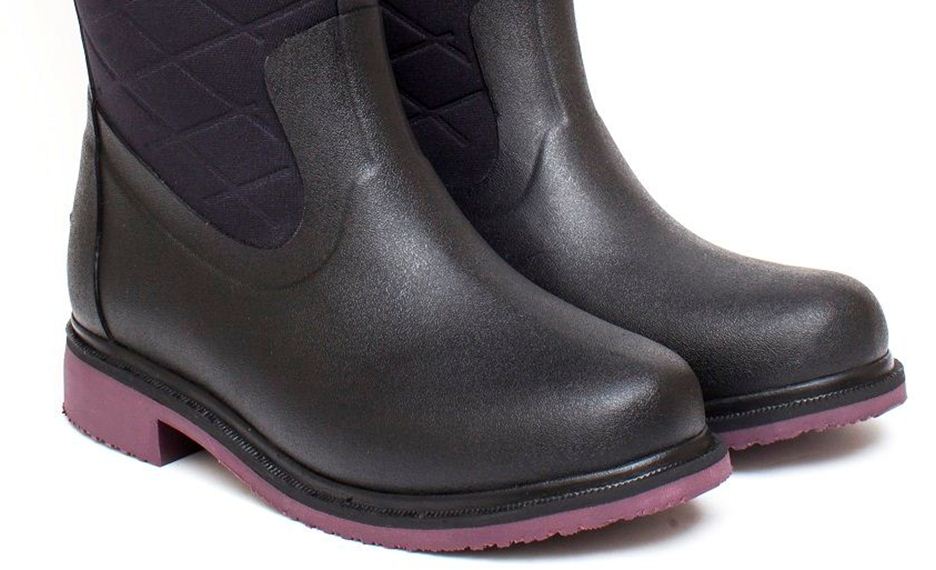When Samuel Foster took over the family business from his father in 1829 he had little or no idea of what a significant part in history he would play.
The Foster family had been cordwainers in the small village of Sandiacre, Nottinghamshire for generations, making shoes for the local gentry and middle classes since 1776.
In 1862 a man walked through Samuels door who was going to change that forever! Samuel Biddulph was the brightest star of Nottinghamshire cricket and he was looking for an edge over his competitors the hobnails on his white shoes simply didn’t bite into the hard ground when he was using the new over armfast bowling technique he had developed.
The Two Samuels hit upon the idea to make the nails longer and pointed (Spikes). Sam Foster approached the local blacksmith Thomas Towel with idea and he agreed to make some short flat-headed nails for Sam to use in Biddulph's shoes.
Biddulph and Foster were the main topic of conversation throughout the 1863 season and cricketers from far and wide travelled to Sandiacre to buy Sam Fosters Cricket shoes.
Left to right: James (Rachael’ s great-grandfather), John, Mariah and Joseph circa 1910.
For the next twenty years Sam continued to make his cricket shoes and made early shoe for Golf and new sports such as football, Sam's three nailed studs were legendary in Nottingham and the surrounding towns.
Events took a twist in early 1890 when his young grandson Joseph came to visit. Both young Joe and his older brother were keen runners and they immediately saw that a pair of their grandfathers shoes, would give them an advantage on the track:
A young Joe seated third from the right with his fellow Bolton Harriers in 1900.
Joe was not content though and set to work in his bedroom above his fathers confectionary shop at 90 Deane road Bolton removing the heels and stripping weight from his shoes.
Joe stayed with his grandfather the following year to learn how to make shoes and continued to evolve his design.
Sam died the following March and young Joe returned to Bolton with his grandfather’ s tools and knowledge.
At last in 1898 he had perfected his Running Pump. It was ultra light used the softest and strongest leathers; most importantly it had six one inch long SPIKES in the front for ultimate grip.
An early ad depicting the revolutionary shoe, it is easy to see why they were in such high demand.
His fellow club runners marvelled at his ‘RUNNING PUMPS’ and he found himself with a fist full of orders at every race he attended.
He set to work in his father’ s back yard, making shoes for local athletes, results on the racetrack and word of mouth spread the news.
In 1904 the legendary Alf Shrub, blistered down the track at Ibrox Park, Glasgow smashing three world records in one race wearing Joe Foster’ s Pumps. Within four years Joe’ s Pumps were renowned as and worn by the best!
Alf Shrubb, who in 1904 broke the six-mile (29.59.4), ten mile (50.40.6) and the hour (11miles, 1,137yards) records in one race wearing ‘ Joe Foster’ s Famous Shoes’
Athletes came to his little shop at 57 Deane Road from all corners of the Empire to be personally fitted by Joe.
By 1910 demand had grown such that he had to expand, next door and create the worlds first athletic shoe factory:
The Olympic works circa 1966
In ‘ The Olympic Works’ , girls toiled on new fangled sewing machines, while highly skilled artisans fitted spikes and hand-sewn welts to create the shoes that graced the feet of the worlds fastest.
Inside the Olympic Works, Joe is on the far right, Billy has his back to the camera on the left, Foster’ s Originals and De-Luxe in production.
No detail was too small for Joe Foster, athletes still tell of shoes that were not only made for individuals but individual races! Straps for cross country, heel spikes for hurdlers, even the number of bends was considered for every shoe.
At the 1936 Olympics, C.B. Holmes wore shoes so light they were designed to last just one race!
In 1914 the wearers of Foster’s Shoes wore medals for valour as the Olympic Works turned to making and repairing Army boots.
My twelve year old great-grandfather had the grim job of washing Flanders mud from returned boots in an immense tub in the back yard “I remember when the water wasn’t grey but red!” he used to tell my father.
The grim reality, local solders, during the third battle of Ypres.
Peace returned and at the1924 Olympics two British stars, Harold Abrahams and Eric Liddell, immortalised in the film ‘ Chariots of Fire’ duelled on the track in Foster’ s Running Pumps.
My great-grandfather, James and great uncle Billy shared the love and enthusiasm for sport that had driven their father.
They were both keen members of Bolton Harriers, Billy being Club Champion for three years running, following his father as Secretary.
My great-grandfather James (left) pictured with a fellow harrier.
He earned notoriety as the ‘ Captain’ when writing the athletics column in the Bolton Evening News. He never passed up the chance to promote the family business!
“The Harriers are favoured in that they have Joe Foster to attend to their shoes, for he will be able not only to advise as to the type of gear that is likely to be most suitable for the Castle-Irwell and Crewe courses, and to provide such, and I would advise the lads to get the shoes they require now, and not leave such provision to the last possible minute”.
(Bolton Evening News-1924)
In 1933 Joe died suddenly and left the business to Billy and my great-grandfather, who expanded into the wider sporting world. By the early ‘50’ s Foster’ s Rugby and Soccer boots graced the feet of many of the top players from Manchester United, Liverpool, Newcastle United and Bolton Wanderers. Their fame was such that when the Moscow Dynamite team made its first trip to the West they all stopped by the Olympic Works, to be personally fitted with new boots.
Jeff (left) and Joe Foster finishing football boots in 1958
In the early 50’ s my grandfather, Joe and great-uncle Jeff began their apprenticeship at the Olympic Works, learning the skills and knowledge that has been passed down from father to son. The notorious hand sewing of welts began to be done by machine but ‘studs and spikes must still be fitted by hand to the specification of each customer’ they were instructed.
By 1958 the Olympic works was at full capacity, 20 craftsmen producing over 30,000pairs of hand made boots and pumps each year, 8,000 finding the feet of new American stars under the Stewardship of Yale and Olympic Coaches Frank Ryan and Bob Geinjack.
Storm clouds were gathering however, when Mariah died in the autumn of that year Billy and My great-grandfather began to disagree on the direction of the company, added to this my grandfather and great-uncle wanted to have a greater say in the business they would inherit, disagreement turned into a full blown feud, with my great-grandfather trapped in the middle!
Billy wanted to continue as they had always done with the quality and craftsmanship the prime consideration. My grandfather and great-uncle saw the rise of cheaper, new technology, being used by Adidas and Puma as the way forward and pressed for a change! At the1958 FA Cup Final Nat Lofthouse scored the winning goal for Bolton Wanderers in Foster’ s boots. That same year my Grandfather and great uncle left under a cloud to found a new company ‘Reebok’.
The two companies were now bitter rivals, but it could not last. In 1960 the Foster company began to fall apart, Billy died in the spring from pneumonia.
Six years later the Olympic works was part of the area to be cleared to build a new technical college, James was producing shoes right up to the bulldozers moving in!
The next 10years saw a gradual decline in the Foster business as my great-grandfather watched one supplier after another go to the wall as British industry struggled into the seventies.
For my grandfather and great-uncle the story was very different, Reebok was establishing its own reputation with its own records and medals in the major games. 200,000 pairs found fame on the feet of the worlds athletes every year. Whilst in 1981 they were rated number one for quality by Runners World Magazine.
Their foresight and Dedication to product development and performance ensured continued success. Throughout the seventies and 80’ s Reebok remained very much a family firm, with my grand mother, great-aunt and my grandfather’ s younger brother John all working for the company.
My dad’ s apprenticeship started early, with school holidays spent making boxes, cementing soles and lacing shoes. His weekends were adventures to muddy fields and hillsides, selling shoes to athletes at races.
My father, David & grandfather, Joe in 1984
My dad began to work full time for my grandfather in 1983 becoming the six generation of Fosters to hand craft the finest running shoes for the world’ s greatest athletes.
My Grandfather sold Reebok in 1984 to the American distributor, but my father continued to work for them until 1993, designing many of the famous classics the company is known for.
After an apprenticeship of 15 years he returned to Bolton to form his own company, to design and develop shoes for a range of international brands.While on a business trip to China my dad met an old friend who had an idea to use neoprene in rubber boots.
The two of them worked on the idea that week and my dad brought back boots for my sisters and I to try. We loved our new ‘ wellies’ and our warm toes. A further trip brought more styles, one for gardening, one for horses and one for farmers.
My Mum and Dad travelled the UK with their new boots and started to find companies to sell them. Within a couple of years the revolution had spread across Europe and the GRUBS® brand was born.
Now with worldwide sales, a reputation for innovative styles and colourful boots for all outdoor activities.
GRUBS® is known for light, waterproof, warm, comfortable boots with amazing grip. GRUBS® today is run by my mum and dad, based form their offices and warehouse in Bolton Lancashire where it all began eight generations ago.
© Rachael and David Foster 2007













